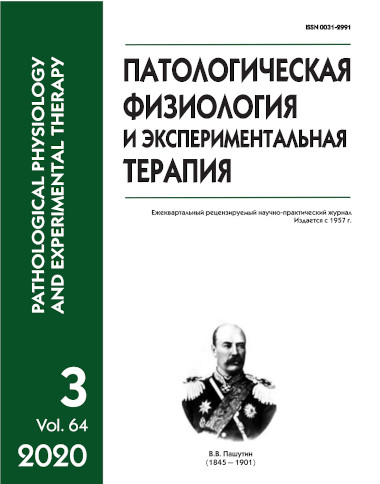Effects of dihydroquercetin on blood pressure and hemorheological parameters in SHR rat during early and stable arterial hypertension
Abstract
Arterial hypertension (AH) is the most common cardiovascular disease and a risk factor for other vascular diseases and organ damage. According to current concepts, changes in blood rheology play an important role in AH progression. Drugs improving hemorheological parameters have been shown to be beneficial in cardiovascular diseases. Aim. To study the effect of dihydroquercetin (DHQ) on blood pressure (BP) and hemorheological parameters in spontaneously hypertensive rats (SHR) at different stages of AH. Methods. Experiments were performed on SHR in the period of AH development (5-week-old SHR at the beginning of experiments) and in the period of stable AH (11-week-old SHR at the beginning of experiments). DHQ (50 mg/kg) was administered intragastrically for 6 weeks. Rats of the control groups received an equal volume of starch mucilage according to the same schedule. BP was measured with a non-invasive NIBP200A (Biopac Systems, Inc., USA) instrument in conscious rats. Viscosity of K2EDTAstabilized whole blood (shear rate range, 15–450 s–1) and plasma (450 s–1) was measured with a rotational viscometer (LVDV-II + Pro, CP40, Brookfield Engineering Labs Inc.) at 36 °C. Hematocrit was determined by centrifugation. Aggregation and deformability of red blood cells was studied with a RheoScan-AnD 300 analyzer (RheoMeditech, Inc.). Results. After 6 weeks of DHQ administration in the period of AH development, mean blood pressure (MBP) and macro- and microrheological parameters did not significantly differ from the respective values in the control group In SHR with stable AH, the DHQ treatment resulted in decreased MBP, blood viscosity, and red blood cell aggregation and increased red blood cell elongation index compared to the control group. Conclusion. Disorders of hemorheological parameters were significantly less pronounced in SHR with early AH. Perhaps for this reason, the DHQ treatment during the development of hypertension did not exert a significant effect on BP. In the period of stable hypertension, hyperviscosity syndrome progressed in SHR. The antihypertensive effect of DHQ in this period, among other things, was associated with a beneficial effect on micro-rheological parameters, including red blood cell aggregation and deformability, which was evident as decreased blood viscosity.






